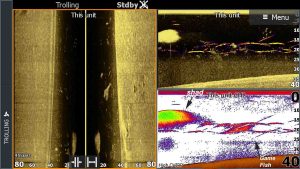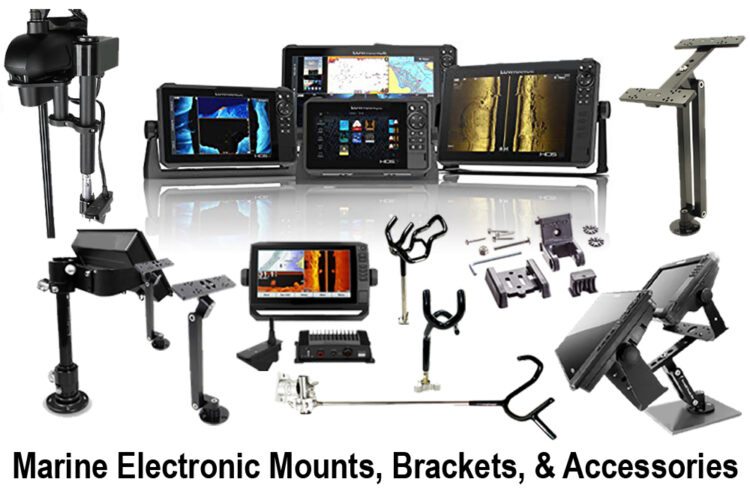Seeing Thermoclines
by Brad Wiegmann
Thermoclines are easily seen on sonar units as reflections of rapidly changing water temperatures reflect off echoes being sent and received by a transducer.
You are probably seeing a thermocline in your favorite reservoir while out fishing during the next few months. In the warmer months a thermocline is typically found in areas with deeper water like creek or main river channels throughout reservoirs where the water temperature changes rapidly. Echoes from an actively pinning sonar unit will travel slower in different water density characteristics reflecting off of this, resulting in the cloudlike imaging referred to as a thermocline.

In 2D traditional sonar or CHIRP sonar, a thermocline typically looks like a long, reflection of small dots closely grouped below where temperature change is located. It may also look like a thick layer of specks above or mixed in with fish.
Side scanning sonar from 455kHz, 800kHz to mega 1.2MHz frequencies will show a thermocline similar to down scanning sonar, but locating it on the left, right and directly below the boat. Due to the fact most anglers have side scanning sonar range set out typically 80 to 100 feet, it’s not as easy to see. Nevertheless, an angler can also get a different perspective of what side of the boat and depth in this mode.
Down scanning sonar from 455kHz, 800kHz to mega 1.2MHz frequencies actually has the best and easiest to interpret as it appears as a thick dense cloud. This dense cloud appears below the thermocline and will increase in brightness as the water temperature changes. Unlike 2D traditional sonar or CHIRP sonar, down scanning sonar will continue to show clear structure or cover like brush piles even in the thermocline.
Anglers can change beam angles to see more or less areas below the boat. A wide beam 2D traditional or CHIRP sonar image will be more clutter as it reflects a thermocline at great distances with a bigger cone area. This makes side scanning sonar or down scanning sonar a better choice for viewing gamefish and baitfish when there is a thermocline.

Increasing the contrast settings will increase the reflection of a thermocline, making it brighter and easier to see, especially in deep water. Anglers fishing in reservoirs in gin-clear water like that in an Ozark highland reservoir will find the thermocline setting up at deeper depths compared to shallow reservoirs. By lowering the contrast, an angler can decrease the clutter, but this also makes seeing gamefish or baitfish harder.
By far the hardest and the easiest to interpret when it comes to seeing a thermocline is live-imaging sonar (LIV). Anglers that have hours and hours of time watching LIS will recognize it quickly. A thermocline will typically appear as a reflection or cloud below a gap where baitfish, gamefish or roughfish are being seen. Due to the fact LIS shows everything and more like ghost trees or seams within the beams, some of the images will show false returns. Expert LIS anglers will not have trouble making sense of extra clutter appearing on the sonar imaging. However, the biggest advantage is seeing where the thermocline is from more than 100 feet away.
(Brad Wiegmann of Springdale, Arkansas is a professional photographer, videographer and outdoor writer published in dozens of print and electronic media outlets across the nation. He is also a well-known guide, podcaster and social media influencer. Learn more about Wiegmann and his lengthy experience and expertise at BradWiegmann.com.)



